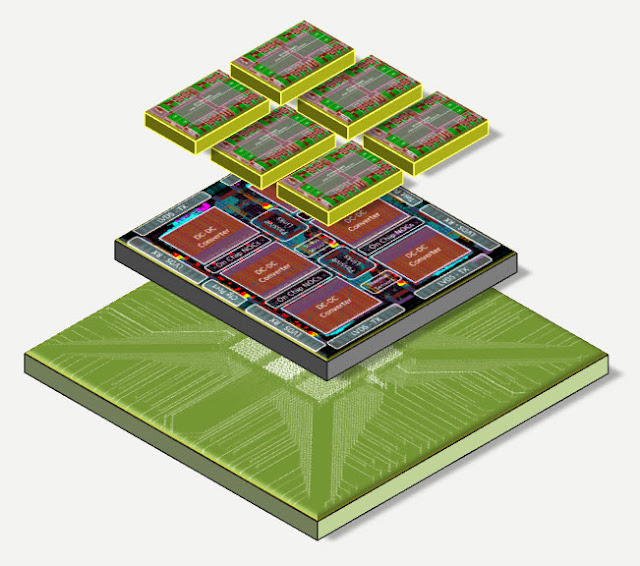Revolutionizing Electronics: Exploring The Future Of Technology With 3D Integrated Circuits
3D integrated circuits (ICs) are rapidly emerging as a promising technology to overcome the physical scaling limitations of conventional 2D planar chip designs. Traditional chip manufacturing has worked by reducing the size of transistors and other components on silicon wafers to pack more of them into each chip. However, this approach is reaching physical limits as transistor dimensions approach the scale of just a few nanometers. 3D ICs offer the potential to integrate more components into the same footprint through their vertical design. Let's take a closer look at this revolutionary technology that could pave the way for continued advancement in computing power.
What are 3D ICs?
3D ICs, also sometimes referred to as 3D chip stacking, involve vertically
stacking silicon wafers or dies and interconnecting them using advanced
through-silicon vias (TSVs). This allows components like memory, logic
processors and graphics processors to be placed closer together in three
dimensions rather than just two. TSVs are micrometer-sized holes that pass
through the silicon substrate and provide electrical connections between stacked
layers. They enable signal, power and ground connections between different
tiers within the 3D IC stack.
Some key advantages of 3D chip stacking over traditional planar 2D ICs include
significantly higher component densities, reduced interconnect delays and
improved performance per unit area. Being able to build vertically conserves
chip "real estate" and allows for an exponential increase in the
am ount of logic, memory, sensors and other components that can be integrated
into a single device. This makes 3D
ICs very well suited for applications with intensive memory and
connectivity requirements such as mobile devices, networking hardware, and
advanced driver-assistance systems.
Future Applications of 3D ICs
Automotive and autonomous driving systems: 3D chip stacking technology is
enabling the development of more complex systems-on-chip required for advanced
driver-assistance systems, automated parking technologies and eventually fully
autonomous vehicles. This includes stacking image sensors, processors and
memory in close physical proximity to enable real-time data processing for
safety-critical functions.
Mobile devices: Stacked DRAM and logic chip designs allow smartphone
manufacturers to deliver more processing power and memory capacity in
increasingly thin and compact device form factors. Multi-tier architectures
help overcome design restrictions in today's high-resolution displays which
demand more pixels to be driven.
High-performance computing: Future multi-core central processing units (CPUs)
and graphics processing units (GPUs) for PCs and servers are expected to rely
heavily on 3D IC technology to integrate hundreds or even thousands of
processing cores. This will massively boost computational capabilities for Big
Data analytics, machine learning, cloud services and low-latency applications.
Challenges and Future Outlook
While 3D ICs offer clear potential benefits, their development and
manufacturing also presents some significant technical challenges that need to
be addressed:
- Thermal management: Heat dissipation becomes more difficult due to increased
density of components in 3D stacks. Novel cooling techniques must be developed
to prevent overheating.
- Testing and yield: Individual layers need to be tested before bonding and
defects across multiple tiers add complexity. Low yields increase costs during
early development phases.
- TSV reliability: Issues like stress-induced voids and delamination at TSV
interfaces over a product's lifetime must be thoroughly evaluated and solved.
- Design complexity: Integrated circuit design methodologies require
modifications for 3D layouts with through-silicon connections. New electronic
design automation tools are still maturing.
Overall, 3D IC technology has progressed rapidly in recent years driven by
mainstream applications in mobile devices and HPC. Major tech players like
Intel, Samsung, TSMC and ARM have heavily invested in 3D chip stacking R&D.
If reliability and manufacturing yields continue improving, 3D ICs have
potential to become the dominant chip design approach later this decade and
spark another revolution in semiconductor technology. Exciting possibilities
around heterogeneous 3D integration combining logic, memory and sensor
technologies on the same stack also remain on the horizon. The benefits of 3D
integration will be instrumental for stemming Moore's Law and further advancing
computational capabilities well into the future.
Explore more
related article on this topic: https://www.newswirestats.com/3d-integrated-circuits-3d-ics-the-next-step-in-chip-design/
For More Insights On
This Topic: https://captionssky.com/bridging-nature-and-innovation-unravelling-the-wonders-of-synthetic-biologys-genetic-tapestry/




Comments
Post a Comment